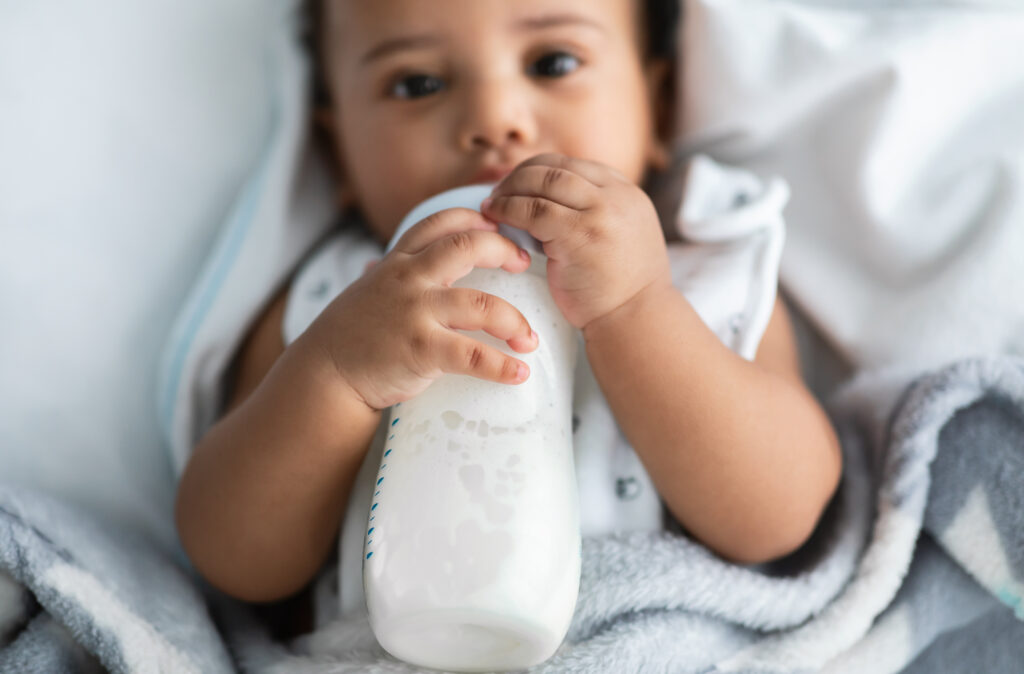French dairy giant Danone recently entered into a strategic investment agreement with Israeli cell-based breast milk startup Wilk Technologies. Danone’s $3.5 million investment could lead to a collaboration with Wilk to develop cell-based breast milk components for infant formula based on its cell technology. Following the investment, Danone will hold at least two percent of Wilk’s share capital.
Wilk, which launched in 2020, produces cell-based human breast milk and animal milk. The publicly-listed startup has a number of patent applications, including one approved patent, on laboratory production processes that replicate the milk-producing cells of humans and other mammals. So, how does Wilk replicate human and animal milk?
The process of creating a nutritious formula depends on the acquisition of human tissue cells. While Wilk does not include human stem cells, it does rely on donated breast tissue from two primary sources. The first is isolated breast tissue cells that have been donated from breast reduction surgeries and the second source is obtained from breastmilk. The company is currently paying lactating mothers for the tissue and the breast milk it receives.
Related: How the FDA’s Closer to Zero Action Plan Aims to Reduce Lead Levels in Baby Food
The controlled setting of a lab allows Wilk to control the outputs of its production process more directly. One of the main advantages of cultured products and ingredients is that they are created in aseptic, disease-free setups. In Wilk’s case, the lab setting permits the company to avoid the pasteurization of milk products, which increases the efficiency of the production.
The startup also takes advantage of the bioactivity of the ingredients used. Breast milk contains unique and dynamic bioactive components that play a key role in the development of the immune system, including essential microbes, human milk oligosaccharides (HMOs), immunoglobulins, lactoferrin and dietary polyunsaturated fatty acids. Breast milk bioactive molecules also give human milk its structure, texture and taste.
While there are several startups working on animal-free dairy, Wilk is one of few companies on the world stage in the cell-based breast milk sector. Wilk’s offering could be a welcome alternative for those who prefer to give their children human milk, but face difficulties breastfeeding, for babies born prematurely and for those who cannot consume commercial infant formula.
Although the cell-based breast milk market is still in its infancy, Wilk already has competitors. Last year, 108Labs unveiled its M2 bioreactor production platform for breast and bovine milk. M2 is a turnkey wetware, software and hardware milk-making stack driven by artificial intelligence (AI) to reduce the cost and accelerate the scaling of cell-based milk production worldwide.
Another cell-based breast milk player, Biomilq, grows donated cells in flasks, feeding them nutrients, then incubates them in a bioreactor that mimics the environment in a breast. And just last month, biotechnology company TurtleTree launched its animal-free lactoferrin, one of milk’s most valuable and functional proteins. The companies have received nearly $25 million and nearly $40 million in total funding, respectively, to bring cell-based breast milk to the market.
Product recalls, a major factory closure and supply chain disruptions have wreaked havoc on the multi-billion dollar baby formula market over the last year. While it is unlikely that cell-based breast milk will ever fully replace baby formula, bringing these products to market will provide alternatives that could be more nutritious and similar in cost to formula. However, rigorous safety testing must be done before cell-based breast milk can be commercially produced, distributed and sold.












Join or login to leave a comment
JOIN LOGIN